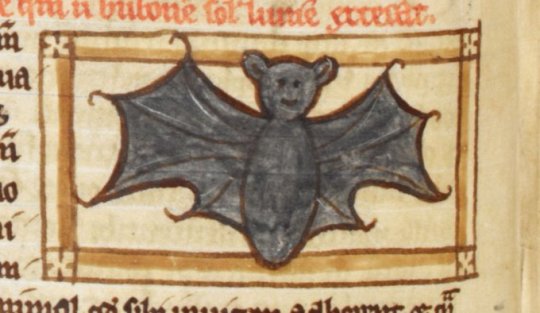Text
3K notes
·
View notes
Text
i may be going a little insane but my thinking that i would be a prophet or oracle or priestess in the past is not part of the madness ensuing
4 notes
·
View notes
Text
“As the undisputed masters of healing herbs (according to the Greeks), the Thracians were no strangers to the shamanic techniques of ecstasy well known among other cultures of the steppe. Working from the texts of Posidonius, Strabo reported that the Mysians, a Thracian group from north-western Anatolia, possessed members of their society called both θεοσεβεις (“those who fear god”) and καπνοβαται (“those who walk in smoke”) who practiced strict vegetarianism and consumed nothing but honey and dairy products. This reference to the “walkers in smoke” may allude to the ecstasy achieved by mass cannabis consumption as reported by Herodotus among the Scythians. […] One Orphic bone inscription from Olbia dated to the 5th century BC reads “for Dion(ysos) and Psyche,” revealing the importance of a transcendent soul in connection with the Greek god of intoxication in Thracian territory. Another of these bone inscriptions containing the words “Βιος Θανατος Βιος” and marked with little “Z” pictograms (which might represent little orphic serpents) reveals the widespread and consistent nature of Dionysian symbolism reaching as far north as modern Ukraine. In the shamanic mystery initiations as practiced by the Orphic cults, near-death experiences and the use of dangerous doses of hallucinogenic plants went hand in hand. Whereas the Divine Bridegroom Sabazios (Dionysus) was primarily the god who presided over ecstasy and entheogenic intoxication, the Thracians held him in equally high regard as a dying-and-rising saviour god and a master over the souls of the deceased. Long before the introduction of alcohol, shaman exploited the ecstatic and oracular properties of hallucinogenic mushrooms (Amanita muscaria and various types of coprophilic Psilocybin-containing mushrooms); opium (Papaver somniferum); “jimsonweed,” “horsemad,” or “thornapple” (Datura stramonium); mandrake root (Mandragora officinarum); cannabis; deadly nightshade (Atropa belladonna); and henbane (Hyoscyamus niger). The experience of death and the ecstatic evacuation of the soul from the body appears commonly in the Thracian funeral iconography on which is depicted the Tree of Life. To be in a state of ekstasis – that is, to stand outside the body – was to experience death itself.”
— Dead Kings and Saviour Gods – Euhemerizing Shamanism in Thracian Religion by Dan Attrell (Source.)
195 notes
·
View notes
Text
“As the undisputed masters of healing herbs (according to the Greeks), the Thracians were no strangers to the shamanic techniques of ecstasy well known among other cultures of the steppe. Working from the texts of Posidonius, Strabo reported that the Mysians, a Thracian group from north-western Anatolia, possessed members of their society called both θεοσεβεις (“those who fear god”) and καπνοβαται (“those who walk in smoke”) who practiced strict vegetarianism and consumed nothing but honey and dairy products. This reference to the “walkers in smoke” may allude to the ecstasy achieved by mass cannabis consumption as reported by Herodotus among the Scythians. […] One Orphic bone inscription from Olbia dated to the 5th century BC reads “for Dion(ysos) and Psyche,” revealing the importance of a transcendent soul in connection with the Greek god of intoxication in Thracian territory. Another of these bone inscriptions containing the words “Βιος Θανατος Βιος” and marked with little “Z” pictograms (which might represent little orphic serpents) reveals the widespread and consistent nature of Dionysian symbolism reaching as far north as modern Ukraine. In the shamanic mystery initiations as practiced by the Orphic cults, near-death experiences and the use of dangerous doses of hallucinogenic plants went hand in hand. Whereas the Divine Bridegroom Sabazios (Dionysus) was primarily the god who presided over ecstasy and entheogenic intoxication, the Thracians held him in equally high regard as a dying-and-rising saviour god and a master over the souls of the deceased. Long before the introduction of alcohol, shaman exploited the ecstatic and oracular properties of hallucinogenic mushrooms (Amanita muscaria and various types of coprophilic Psilocybin-containing mushrooms); opium (Papaver somniferum); “jimsonweed,” “horsemad,” or “thornapple” (Datura stramonium); mandrake root (Mandragora officinarum); cannabis; deadly nightshade (Atropa belladonna); and henbane (Hyoscyamus niger). The experience of death and the ecstatic evacuation of the soul from the body appears commonly in the Thracian funeral iconography on which is depicted the Tree of Life. To be in a state of ekstasis – that is, to stand outside the body – was to experience death itself.”
— Dead Kings and Saviour Gods – Euhemerizing Shamanism in Thracian Religion by Dan Attrell (Source.)
195 notes
·
View notes
Text
ALLOW THE KITTEN TO HAVE ALL THE LOVE PLEASE I WAS SOBBING

424 notes
·
View notes
Text
BEHOLD

smiling bat :)

based on this guy ^ my favorite little guy from British Library Harley MS 3244 f 55v
4K notes
·
View notes
Text
do you ever sit there in your bed with your head in your hands and it's like you can just imagine 9 swords behind you
20K notes
·
View notes
Text

Hilma Af Klint - No. 1, Group VIII, The US Series (1913)
All is there: the two colours - yellow and blue -, the spiral, the chakras, the two connected figures
Love her art!
48 notes
·
View notes
Text
5K notes
·
View notes
Text

Léo Forest Leo Forest (b. 1985, based Paris, France) - Chat, 2023, Drawings: Pencil, Charcoal, Pastel on Paper
10K notes
·
View notes
Text

New York, Lower South Street, c. 1885, by John Stobart (1929- 2023)
174 notes
·
View notes




